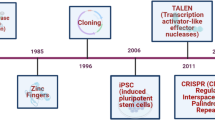Abstract
Insulin-induced genes (INSIGs) are recently discovered genes that are involved in the metabolism of cholesterol and lipogenesis in animal tissues. In this study, two INSIG genes (INSIG1 and INSIG2) were isolated and characterized in 11 buffalo. The full-length coding sequence (CDS) of the buffalo INSIG1 consists of 831 bp which encodes a 276 amino acid protein with molecular mass 29.55 kD. And the INSIG2 CDS is 678 bp in length which encodes a 225 amino acid protein with molecular mass 24.87 kD. No polymorphisms were found in the CDSs of the buffalo INSIGs, but seven and two nucleotide differences were found in the CDSs between buffalo and other bovine species. Phylogenetic analyses based on the INSIG amino acid sequences showed that buffalo was grouped with other members in the Bovidae family. Four types of putative modification sites were detected in buffalo INSIG proteins. And two predicted microRNA target sites were found respectively in the CDSs of buffalo INSIG1 and INSIG2. The tissue expression analyses by quantitative PCR (qPCR) revealed that the buffalo INSIG1 was expressed in ten tissues tested. Among these tissues, the liver and mammary gland showed high expression levels. And the INSIG2 was only expressed in the brain, mammary glands, pituitary, abomasum, heart, and liver. Among these tissues, the mammary gland, brain, and pituitary demonstrated a high expression levels. These data provide the primary foundation for further insights into the buffalo INSIG genes.








Similar content being viewed by others
References
Bartel D.P., 2004. MicroRNAs: genomics, biogenesis, mechanism, and function, Cell, 116, 281–297.
Bradshaw R.A., Dennis E.A., 2011. Regulation of Organelle and Cell Compartment Signaling: Cell Signaling Collection, Academic Press, London.
Bionaz M., Loor J.J., 2008. Gene networks driving bovine milk fat synthesis during the lactation cycle, BMC Genomics, 9, 366–386.
Dong X.Y., Tang S.Q., 2010. Insulin-induced gene: A new regulator in lipid metabolism, Peptides, 31, 2145–2150.
Goldstein J.L., DeBose-Boyd R.A., Brown M.S., 2006. Protein Sensors for Membrane Sterols, Cell, 124, 35–46.
Han L.Q., Li H.J., Wang Y.Y., Zhu H.S., Wang L.F., Guo Y.J., Lu W.F., Wang Y.L., Yang G.Y., 2010. mRNA abundance and expression of SLC27A, ACC, SCD, FADS, LPIN, INSIG, and PPARGC1 gene isoforms in mouse mammary glands during the lactation cycle, Genetics and Molecular Research, 9, 1250–1257.
Han, X., Lee, F.L., Zhang, L., Guo, M. R., 2012. Chemical composition of water buffalo milk and its low-fat symbiotic yogurt development, Functional Foods in Health and Disease, 2, 86–106.
Jo Y., Hartman I.Z., DeBose-Boyd R.A., 2013. Ancient ubiquitous protein-1 mediates sterol-induced ubiquitination of 3-hydroxy-3-methylglutaryl CoA reductase in lipid droplet–associated endoplasmic reticulum membranes, Molecular biology of the cell, 24, 169–183.
Kayashima T., Nakata K., Ohuchida K., Ueda J., Shirahane K., Fujita H., Cui L., Mizumoto K., Tanaka M., 2011. Insig2 is overexpressed in pancreatic cancer and its expression is induced by hypoxia, Cancer Science, 102, 1137–1143.
Kumar S, Nei M, Dudley J, Tamura K., 2008. MEGA: a biologist-centric software for evolutionary analysis of DNA and protein sequences, Briefings in Bioinformatics, 9, 299–306.
Kuo P.H., Kao C.F., Chen P.Y., Chen C.H., Tsai Y.S., Lu M.L., Huang M.C., 2011. Polymorphisms of INSIG2, MC4R, and LEP are associated with obesity-and metabolic-related traits in schizophrenic patients, Journal of Clinical Psychopharmacology, 31, 705–711.
Liu Y., Liu X.L., He H., Gu Y.L., 2012. Four SNPs of insulin-induced gene 1 associated with growth and carcass traits in Qinchuan cattle in China, Genetics and Molecular Research, 11, 1209–1216.
Livak K.J., Schmittgen T.D., 2001. Analysis of Relative Gene Expression Data Using Real-Time Quantitative PCR and the 2−ΔΔCT Method, Methods, 25, 402–408.
Nafikov,R., 2010. Genetic regulation of bovine milk fatty acid composition: Improving the healthfulness of milk through selection, Graduate Theses and Dissertations, paper 11674.
Peng Y., Schwarz E.J., Lazar M.A., Genin A., Spinner N.B., Taub R., 1997. Cloning, human chromosomal assignment, and adipose and hepatic expression of the CL-6/INSIG1 gene, Genomics, 43, 278–284.
Sato R, 2010. Sterol metabolism and SREBP activation. Archives of biochemistry and biophysics, 501, 177–181.
Wang Y.M., Zhang B, Xue Y, Li Z.J., Wang J.F., Xue C.H., Yanagita T, 2010. The mechanism of dietary cholesterol effects on lipids metabolism in rats, Lipids in Health and Disease, 9, 4–9.
Xiao-Ying D., Sheng-Qiu T., Jin-Ding C., 2012. Dual functions of Insig proteins in cholesterol homeostasis, Lipids in Health and Disease, 11, 173–180.
Yabe D., Brown M.S., Goldstein J.L., 2002. Insig-2, a second endoplasmic reticulum protein that binds SCAP and blocks export of sterol regulatory element-binding proteins, Proceedings of the National Academy of Sciences of the United States of America, 99, 12753–12758.
Acknowledgments
This study was financially supported by the Natural Science Foundation Key Project of Yunnan Province, China (no. 2007C0003Z), the National Natural Science Foundation of China (no. 30660024), the Applied and Basic Research Foundation of Yunnan Province, China (no. 2006C0034M and 2010ZC243) and the Foundation of Yunnan Department of Finance, China (study on the germplasm characteristics of Binglangjiang buffalo) and the Ph.D. Programs Foundation of Ministry of Education of China.
Author information
Authors and Affiliations
Corresponding author
Additional information
Chunfeng Wu, Lixian Liu, and Jinlong Huo contributed equally to this study.
Rights and permissions
About this article
Cite this article
Wu, C., Liu, L., Huo, J. et al. Isolation, sequence characterization, and tissue transcription profiles of two novel buffalo genes: INSIG1 and INSIG2 . Trop Anim Health Prod 46, 33–41 (2014). https://doi.org/10.1007/s11250-013-0443-y
Accepted:
Published:
Issue Date:
DOI: https://doi.org/10.1007/s11250-013-0443-y




